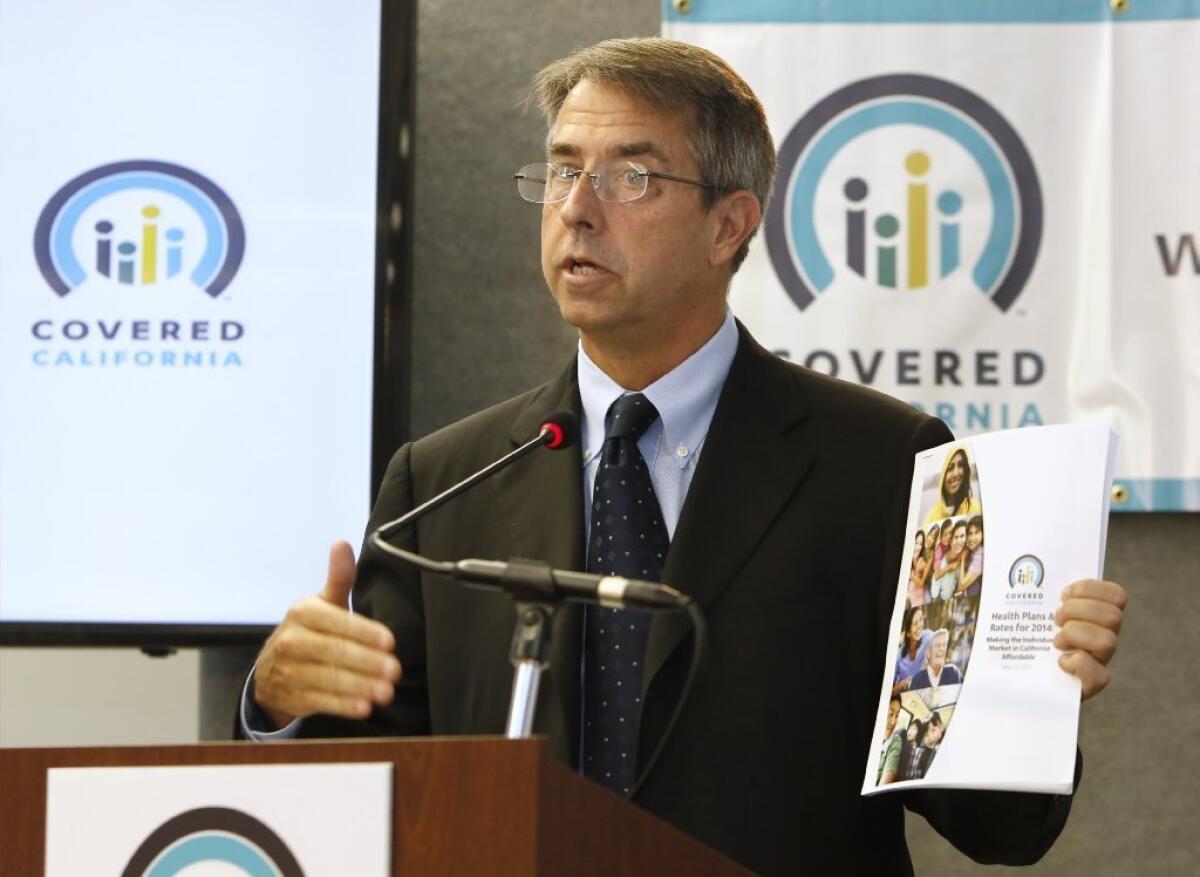Health insurance: Can it be made simple?

- Share via
The success of the 2010 federal healthcare law depends in part on more uninsured Americans obtaining coverage. So it’s crucial that when the uninsured try to sign up for policies, they don’t get a bureaucratic runaround or wind up in phone-tree hell. Yet that’s what may happen in California. It’s up to state lawmakers and the Brown administration to make sure that counties and Covered California, the state’s new insurance-buying exchange, can provide hassle-free customer service.
The healthcare law sought to make insurance affordable to more low- and moderate-income Americans in two main ways. First, it raised the income cutoff for Medicaid — the joint federal-state insurance program for the poor, which goes by the name Medi-Cal here — to 138% of the federal poverty line, and made more people under that threshold eligible. Second, it offered premium subsidies through the new state exchanges to anyone earning 138% to 400% of the poverty line.
Because Medicaid and the exchanges use the same streamlined formula for calculating an applicant’s income, states could set up a single place for residents to enroll in the appropriate program. On the Brown administration’s insistence, however, California is taking a more complex, less consumer-friendly approach. Applicants will be required to call or apply online to Covered California, which will quickly determine whether they’re likely to be eligible for Medi-Cal. If they are, they’ll be handed back to their county or its designated call center.
That split process is fraught with potential problems. The counties don’t have standards today for how well they must treat applicants — for example, by limiting the time they spend on hold. Complicating matters, many lower-income children will be eligible for Medi-Cal, but their parents will not because the income limits aren’t the same for children and adults. If government forces this vulnerable population to jump through multiple hoops to get coverage, the healthiest ones won’t bother, leaving Medi-Cal to cover just the sicker, costlier ones.
Ideally, the state would make sure that whether applicants contacted Covered California or a county welfare office, they could be enrolled on the spot in whatever insurance program they were eligible for. Failing that, it should set performance standards that the exchange and counties would have to meet, with the exchange empowered to serve callers that counties can’t handle. The 2010 law will work only if a broad cross-section of Americans sign up, not just those who are most in need of care.
More to Read
A cure for the common opinion
Get thought-provoking perspectives with our weekly newsletter.
You may occasionally receive promotional content from the Los Angeles Times.






